Release Date :
Reference Number :
2022-020
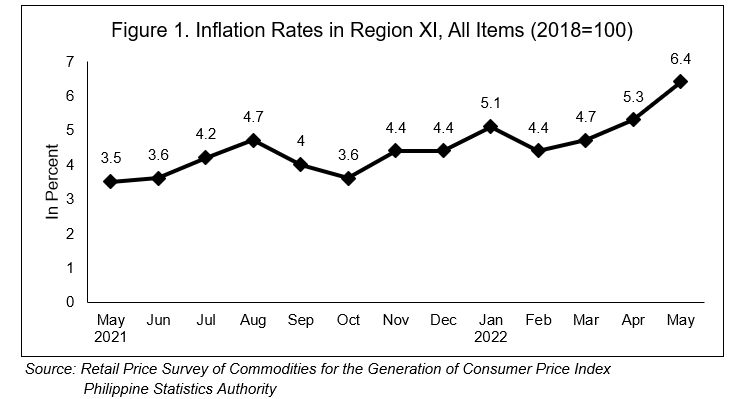
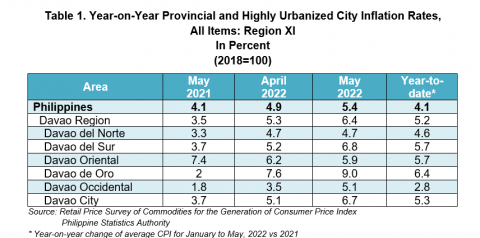
The year-on-year regional inflation of Davao Region moved upward to 6.4 percent in May 2022, from 5.3 percent in April 2022. This is the highest recorded inflation since January 2022. Inflation in May 2021 was lower at 3.5 percent. The average inflation for the first five months of the year stood at 5.2 percent. (Table 1 and Figure 1)
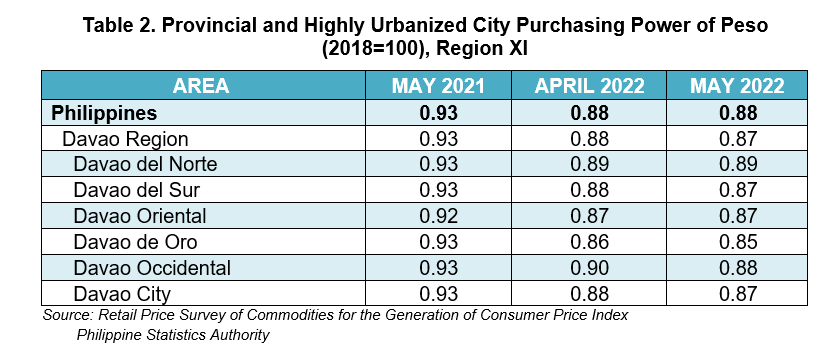
Purchasing Power of the Peso (PPP) measures the real value of the Philippine peso in a given period relative to its value in the base period. In Davao Region, a peso in 2018 is worth 87 centavos in May 2022. This month’s PPP is lower than in May 2021 at 93 centavos. (Table 2)

The increase in the region’s inflation was mainly brought about by the higher annual increase in the index for food and non-alcoholic beverages at 7.0 percent; transport at 16.2 percent; and personal care, and miscellaneous goods and services at 3.7 percent. Furthermore, contributing to the uptrend in the overall inflation during the period were the higher annual increments in the indices of the following commodity groups as compared with their previous month’s inflation rates:
a. Restaurants and Accommodation Services at 2.7 percent;
b. Health at 3.7 percent;
c. Alcoholic Beverages and Tobacco at 6.3 percent;
d. Furnishings, Household Equipment and Routine Household Maintenance at 3.8 percent;
e. Clothing and Footwear at 2.6 percent; and
f. Recreation, Sport and Culture at 2.2 percent
On the other hand, the only index that declined is for housing, water, electricity, gas and other fuels at 5.4 percent. The rest of the commodity groups either retained their previous month’s inflation rates or had zero percent annual growths. (Table 3)
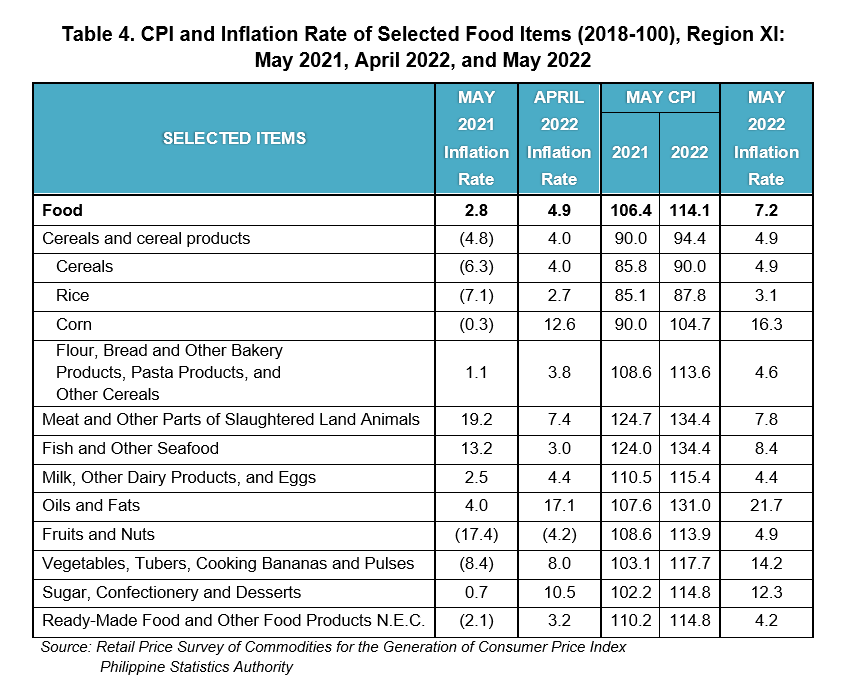
For the food index, it increased by 7.2 percent in May from 4.9 percent in the previous month. In May 2021, the food index was lower by 2.8 percent.
In addition, a double-digit increase in growth rate was observed in fish and other seafood at 8.4 percent; vegetables, tubers, plantains, cooking bananas and pulses at 14.2 percent; and fruit and nuts at 4.9 percent. Higher annual upticks were recorded in the following food groups:
a. Corn at 16.3 percent;
b. Rice at 3.1 percent;
c. Meat and other parts of slaughtered land animals at 7.8 percent;
d. Oils and fats at 21.7 percent;
e. Flour, Bread and Other Bakery Products, Pasta Products, and Other Cereals at 4.6 percent;
f. Sugar, confectionery and desserts at 12.3 percent; and
g. Ready-made food and other food products n.e.c. at 4.2 percent
Among the food groups, only the index for milk, other dairy products and eggs had a steady growth rate at 4.4 percent. (Table 4)
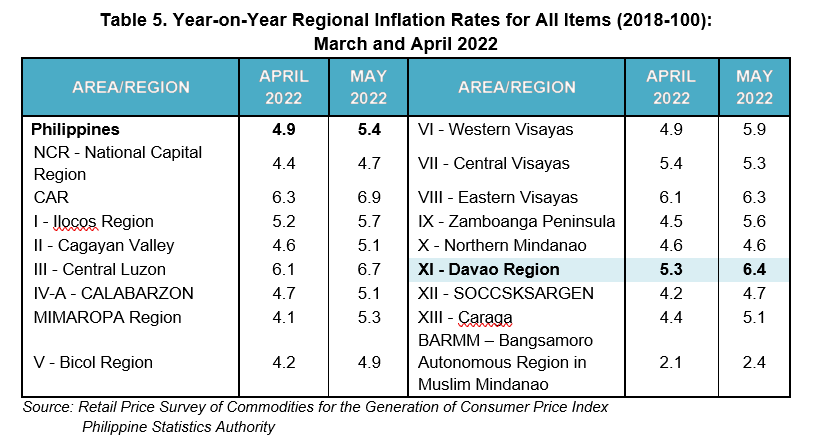
At the national level, the headline inflation in the country increased at 5.9 percent in May 2022, from 4.9 percent in the previous month. Among the 17 administrative regions, Cordillera Administrative Region had the highest inflation at 6.9 percent followed by Central Luzon at 6.7 percent, and Davao Region at 6.4 percent. On the other hand, BARMM had the lowest inflation at 2.4 percent (Table 5).
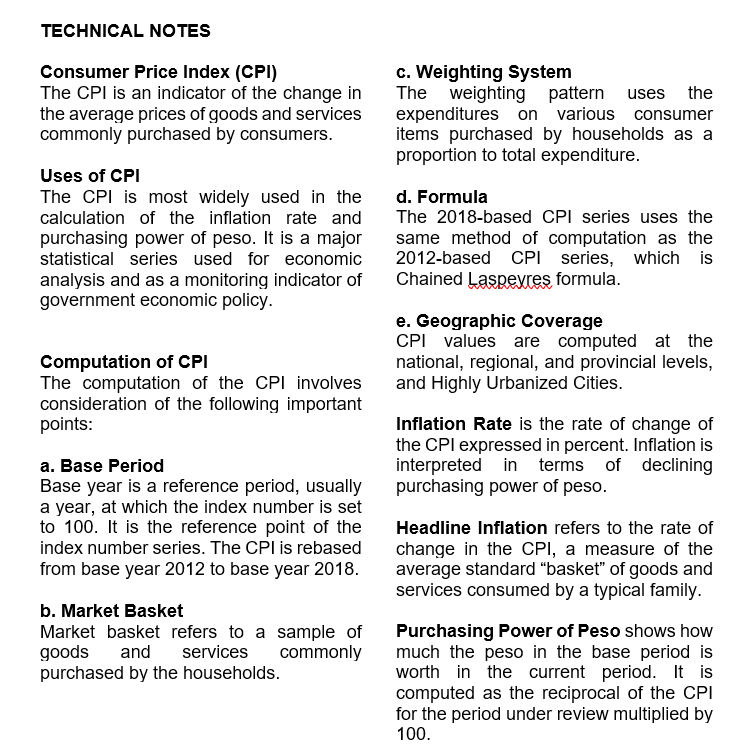
Note: CPIs and inflation rates by province and selected city are posted on the PSA website (http://openstat.psa.gov.ph/).
APPROVED FOR RELEASE:
RUBEN D. ABARO, JR., CESE
Regional Director
